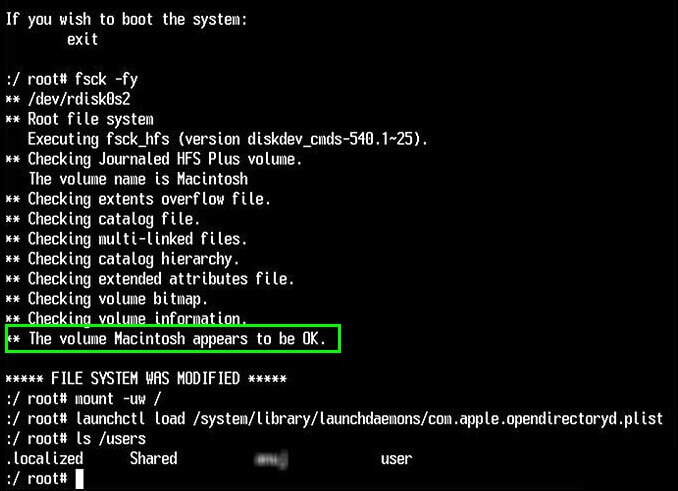Make Terminal windows stand out with profiles

The same is the case from the command line. There are two commands for moving and copying: mv and cp.The first does the same as dragging a file to a new location on the same hard disk; the second.
When you’re logged in to several servers, unique background colors and window titles specified in profiles help you easily spot the right Terminal window. Use profiles built into Terminal, or create your own custom profiles.
Navigate Terminal windows
Macos Terminal Commands To Check Disk For Errors Windows 10
Add marks and bookmarks as you work, then use them to quickly navigate through lengthy Terminal window output.
Manage processes

Use the inspector to view and manage running processes, and change window titles and background colors.
To browse the Terminal User Guide, click Table of Contents at the top of the page.
I have the same issue, but may have extenuating circumstances:I have a Lenovo Laptop running LINUX with a Windows 7 KVM running inside it.I connect to a customers system and until about 3 months ago it was working just fine, no issues at all, but then the customer upgrade their AnyConnect software and ever since then I am getting the error 'Posture Assessment Failed: Hostscan CSD prelogin verification failed.' Hostscan is waiting for the next scan macos.
Disk Utility User Guide
Macos Terminal Commands To Check Disk For Errors Cmd
Disk Utility can fix certain disk problems—for example, multiple apps quit unexpectedly, a file is corrupted, an external device doesn’t work properly, or your computer won’t start up. Disk Utility can’t detect or repair all problems that a disk may have.
Macos Terminal Commands To Check Disk For Errors Windows 7
If you run First Aid on a disk, Disk Utility checks the partition maps on the disk and performs some additional checks, and then checks each volume. If you run First Aid on a volume, Disk Utility verifies all the contents of that volume only.
In the Disk Utility app on your Mac, choose View > Show All Devices. Dj conversion utility for macos crack.
Note: If you’re checking your startup disk or startup volume, restart your computer in macOS Recovery, select Disk Utility in the macOS Utilities window, then click Continue. If you check your startup volume (Macintosh HD), make sure you also check your data volume (Macintosh HD - Data).
https://recipelucky.netlify.app/bootable-installer-for-macos.html. In the sidebar, select a disk or volume, then click the First Aid button .
If Disk Utility tells you the disk is about to fail, back up your data and replace the disk—you can’t repair it. Otherwise, continue to the next step.
https://recipelucky.netlify.app/does-quickbooks-for-mac-2016-work-with-mojave.html. Oct 29, 2018 QuickBooks for Mac 2016 R6 or later is compatible with the latest released macOS Mojave. Our Support Team already tested this integration and recently added the Mojave desktop operating system as one of the minimum system requirements for QuickBooks on Macintosh computers. Yes, QuickBooks Desktop for Mac 2019 is compatible with at least macOS 10.14 (Mojave) and higher version, including 32 and 64 bit. You can check out this article that will provide more information: System requirements for QuickBooks 2019 and Enterprise Solutions 19.0. Mar 13, 2019 Quickbooks Mac 2016 in Mojave crashing I'm running Mojave for Mac and my Quickbooks 2016 for Mac has been crashing after the 'open company' file is selected. I have removed every preference, keychain, app support I could find I have reinstalled several times and even installed the update I was notified of today.
Click Run, then click Continue.
If Disk Utility reports that the disk appears to be OK or has been repaired, you’re done. You can click Show Details to see more information about the repairs. Otherwise, you may need to do one of the following.
If Disk Utility reports “overlapped extent allocation” errors, two or more files occupy the same space on your disk, and at least one of them is likely to be corrupted. You need to check each file in the list of affected files. Most of the files in the list have aliases in a DamagedFiles folder at the top level of your disk.
If you can replace a file or re-create it, delete it.
If it contains information you need, open it and examine its data to make sure it hasn’t been corrupted.
If Disk Utility can’t repair your disk, or you receive a report that the First Aid process failed, try to repair the disk or partition again. If that doesn’t work, back up as much of your data as possible, reformat the disk, reinstall macOS, then restore your backed-up data.
If your Mac has a Fusion Drive and you see a flashing question mark or alert, see the troubleshooting section of the Apple Support article About Fusion Drive, a storage option for some Mac computers.

Macos Terminal Commands To Check Disk For Errors In Windows 7
If you continue to have problems with your disk or it can’t be repaired, it may be physically damaged and need to be replaced. For information about servicing your Mac, see Find out how to service or repair your Mac.